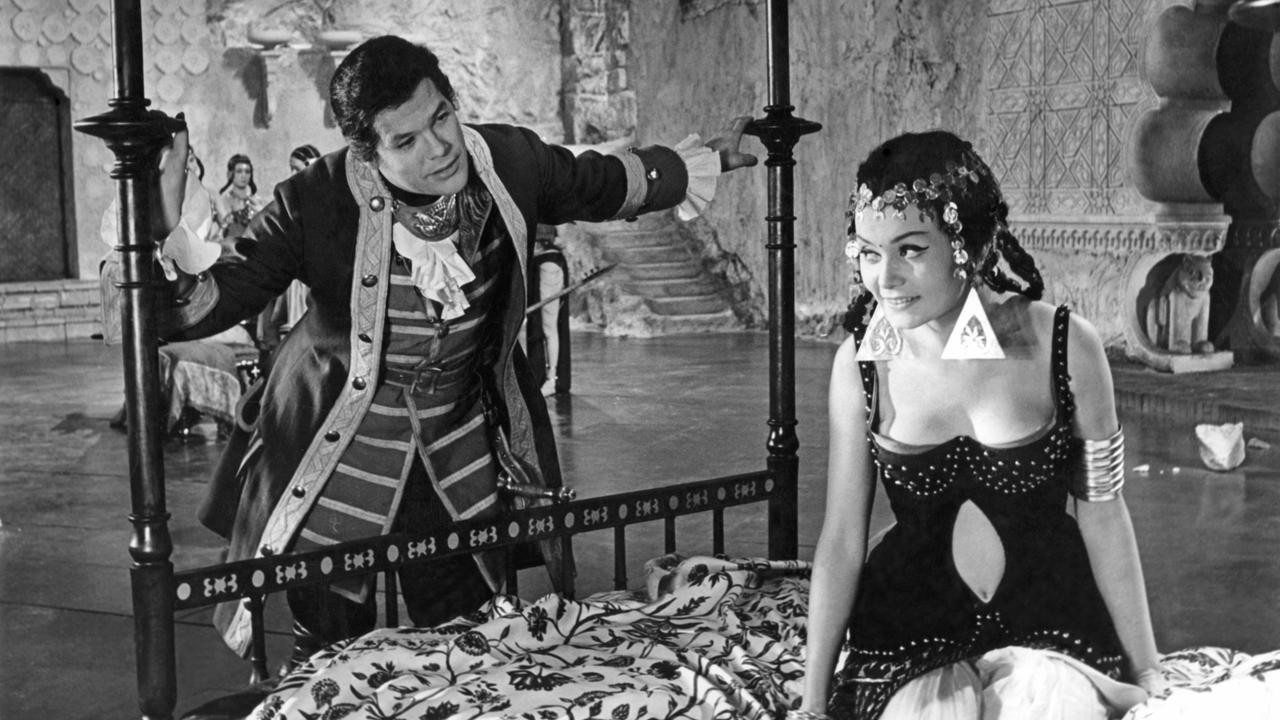

In his essay ‘Definition of the Fantastic’, Tzvetan Todorov explains it as ‘that hesitation experienced by a person who knows only the laws of nature, confronting an apparently supernatural event’. Whereas Potocki opts to bring the history behind each of his characters’ stories to a close, Has leaves both van Worden and his audience trapped in a perpetual fantasy, marching back into the infinite meanderings of the accursed Manuscript. Has’ film also further embellishes the novel’s underlying ambiguities to suggest a deeper relevance to its supernatural overtones. Its interlocking Russian doll structure finds common ground with literary works such as The Decameron and Arabian Nights, exploring themes of philosophy, mythology, religion, folklore and eroticism, among others.

Sargossa manuscript series#
In an appropriately absurd fashion, The Saragossa Manuscript contorts its way through a series of tales and adventures, continually unravelling new and seemingly spurious narrative strands. Believed to have been a Freemason, an army officer, a ‘novice Knight of Malta’ (?), an Egyptologist, a linguist, started an independent press and also to have ascended in one of the world’s first hot-air balloons, Potocki committed suicide at the age of 54 by melting down a silver bullet from one of his possessions, having it blessed by a priest and shooting himself in the head. Remaining true to its original form, Has’ film retains its sense of tribute to the history of campfire storytelling – an aspect widely believed to have been a semi-autobiographical re-telling of Potocki’s own life. He later meets a man possessed by the devil, who claims to have had exactly the same experience, thus becoming the first of many characters throughout Alphonse’s journey with whom he exchanges his tales. For Alphonse, this is the first of several dalliances with the supernatural as he awakes the following morning under a set of gallows beside two corpses. Nevertheless, he accepts the abundance of food and drink he is offered and goes to bed inside the lavish chamber where he is joined by the sisters. As Potocki’s original text refers to it, Alphonse grows unsettled by their advances, unsure as to whether they were women or ‘insidious succubae’. In search of his missing valet, Zbigniew Cybulski’s charming protagonist Alphonse happens upon an abandoned Inn in which he encounters an underground chamber and the enchanting Gomelez sisters. The book follows Alphonse van Worden, a young Belgian captain of the Walloon guards travelling across the mountains of the Sierra Morena on his way to Madrid. He is joined by an enemy Spanish Officer who claims to be the grandson of the character within the book and so begins translating the pages. The film opens in Saragossa during the Napoleonic wars where a French Officer stumbles across the book from which the film takes its name. Since its complete restoration The Saragossa Manuscript has maintained a relatively infrequent presence at various film festivals and art-house cinema venues and has thus sustained its status as a counter-culture classic.ĭespite some necessary removal and shortening of the multitude of tales within Potocki’s original text, Has’ multi-layered three hour epic notably retains its striking sense of humour and remarkable dry wit which often spills over into the realm of surreal comedy. Likening the experience of watching the film to being under the influence of drugs, Garcia championed Has’ film as an avant-garde masterpiece and soon after sought to obtain a complete print by way of providing funds to the Pacific Film Archive. Though ultimately due to funding from film restoration advocate Martin Scorsese, the initial process of restoration began at the hands of counter-culture figurehead Jerry Garcia. With a live score from The Recording Angel Ensemble, Has’ 1965 epic fantasy made for a justifiably fascinating and memorable opening night.īased on the equally ambitious novel The Manuscript Found in Saragossa (1813) by Polish author Count Jan Potocki (1761-1815), Has’ film was finally restored to its entirety for US and UK audiences in 1997 and premiered at the New York Film Festival the same year. Has’ The Saragossa Manuscript makes a rare and welcome appearance in the December schedule following a specially commissioned performance. Screening at London’s National Film Theatre, Wojciech J. The Saragossa Manuscript and The Recording Angel Ensemble By Owen Armstrong


 0 kommentar(er)
0 kommentar(er)
